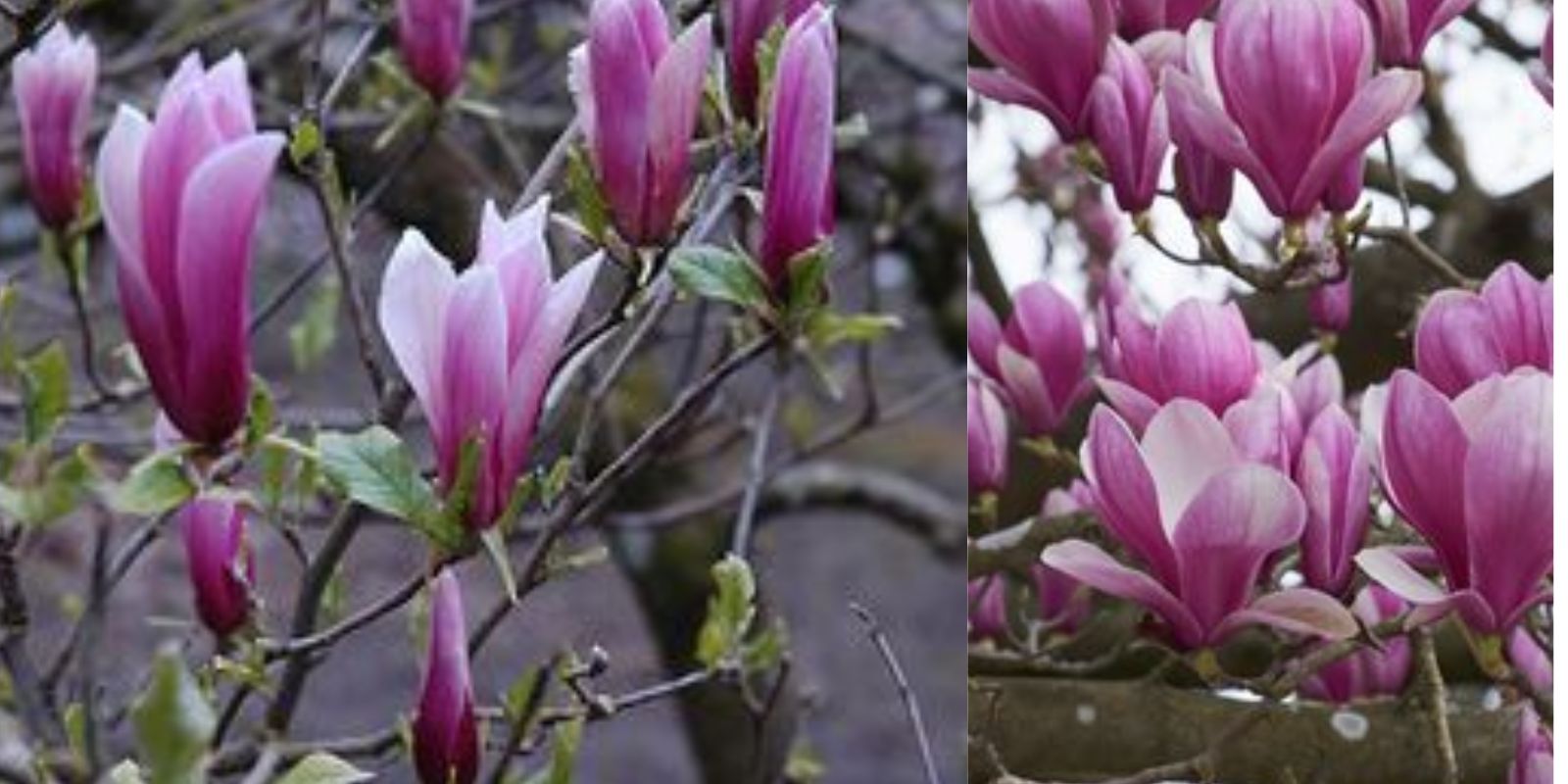Introduction
Magnolias, with their striking flowers and elegant form, are cherished additions to any garden or landscape. Among the diverse species of magnolias, Magnolia liliiflora, commonly known as the lily magnolia or Mulan magnolia, stands out for its unique characteristics and ornamental value. This article delves into the beauty of Magnolia liliiflora, offering insights into its cultivation, care, and the enchanting presence it brings to outdoor spaces.
Magnolia liliiflora: A Profile
Magnolia liliiflora is a deciduous shrub or small tree native to China and Japan, belonging to the magnolia family (Magnoliaceae). It is renowned for its showy, tulip-shaped flowers that appear in early spring before the leaves emerge. The blossoms range in color from deep purplish-pink to lighter shades, often with a hint of white at the base. Each flower is a stunning display of elegance, with numerous petals arranged in a goblet-shaped form, exuding a delicate fragrance that attracts bees and other pollinators.
Cultivation and Planting
Choosing the Right Location
When selecting a site for planting Magnolia liliiflora, consider its preference for full sun to partial shade. Ensure the location has well-draining soil that is rich in organic matter. Magnolias generally thrive in locations sheltered from strong winds, which can damage their delicate flowers and foliage.
Planting Magnolia liliiflora
- Preparing the Soil: Dig a hole that is twice as wide as the root ball but no deeper than the root ball itself.
- Positioning the Tree: Place the magnolia in the hole, making sure the top of the root ball is level with the surrounding soil.
- Backfilling: Fill the hole with soil, gently firming it around the roots to eliminate air pockets.
- Watering: Water the newly planted magnolia thoroughly to settle the soil and promote root establishment.
Care and Maintenance
Watering
Magnolia liliiflora requires regular watering, especially during periods of drought or dry weather. Keep the soil consistently moist but not waterlogged. Mulching around the base of the tree helps retain moisture and regulate soil temperature.
Pruning
Prune Magnolia liliiflora minimally to maintain its natural shape and remove any dead, damaged, or crossing branches. Pruning is best done immediately after flowering to avoid cutting off next season’s flower buds, which form soon after the current year’s blooms fade.
Fertilizing
Feed Magnolia liliiflora with a balanced fertilizer formulated for acid-loving plants in early spring, before new growth begins. Avoid excessive fertilization, as it can promote lush foliage at the expense of flowers.
Protecting from Pests and Diseases
Magnolias are generally resilient to pests and diseases, but they can occasionally be affected by scale insects, aphids, and fungal diseases like powdery mildew. Monitor your magnolia regularly and treat any pest or disease issues promptly with appropriate methods or organic treatments.
Seasonal Care Tips
Spring
Enjoy the spectacular display of Magnolia liliiflora’s flowers in early spring. Take care to water and fertilize as needed to support healthy growth and flowering.
Summer
During hot summer months, ensure the magnolia receives adequate water to withstand heat stress. Mulch around the base of the tree to conserve soil moisture and protect roots from extreme temperatures.
Fall
As temperatures cool in fall, continue to monitor watering and mulching. Prepare the magnolia for winter by reducing fertilization and ensuring the soil is well-drained to prevent waterlogging.
Winter
While Magnolia liliiflora is hardy in temperate climates, protect young trees from frost damage by covering them with burlap or providing temporary shelter during extreme cold spells.
Benefits of Growing Magnolia liliiflora
Ornamental Value
The main allure of Magnolia liliiflora lies in its exquisite flowers, which serve as focal points in gardens and landscapes. Their early bloom time makes them a harbinger of spring, adding color and fragrance to outdoor spaces when few other plants are in flower.
Wildlife Attraction
The fragrant flowers of Magnolia liliiflora attract pollinators such as bees and butterflies, contributing to biodiversity in your garden. The tree also provides habitat and food for beneficial insects and birds.
Landscape Versatility
Due to its manageable size and attractive foliage, Magnolia liliiflora is suitable for various landscaping applications. It can be used as a specimen tree, planted in groups for a dramatic effect, or incorporated into mixed borders and shrub beds.
Conclusion
Magnolia liliiflora, with its captivating flowers and graceful form, exemplifies the beauty of ornamental trees in garden settings. By understanding its cultivation requirements and providing proper care, you can successfully grow and enjoy this magnificent species in your own outdoor space. Whether you’re a seasoned gardener or a novice enthusiast, planting Magnolia liliiflora offers a rewarding opportunity to enhance your landscape with nature’s splendor.
Motivation
Embrace the elegance of Magnolia liliiflora in your garden and experience the joy of witnessing its exquisite blooms each spring. Cultivating this enchanting magnolia not only adds visual appeal to your outdoor environment but also connects you with the wonders of nature throughout the seasons. Start your journey with Magnolia liliiflora today and create a lasting impression of beauty and grace in your landscape. 🌸

